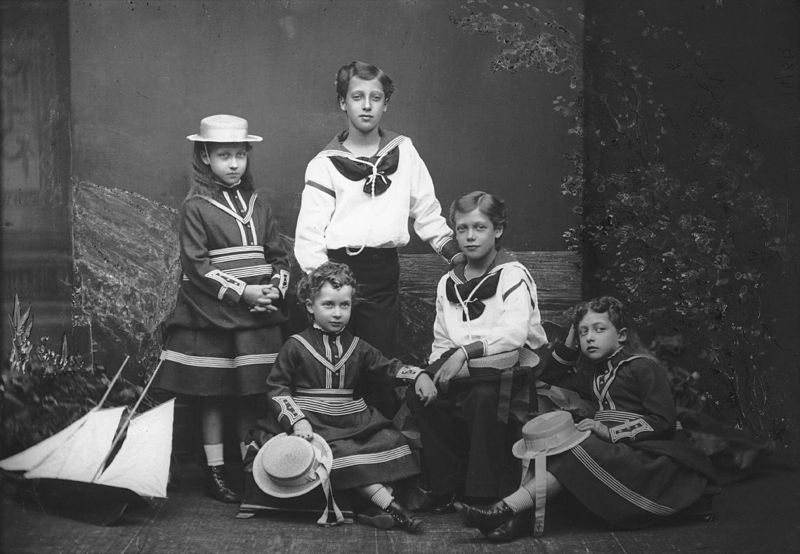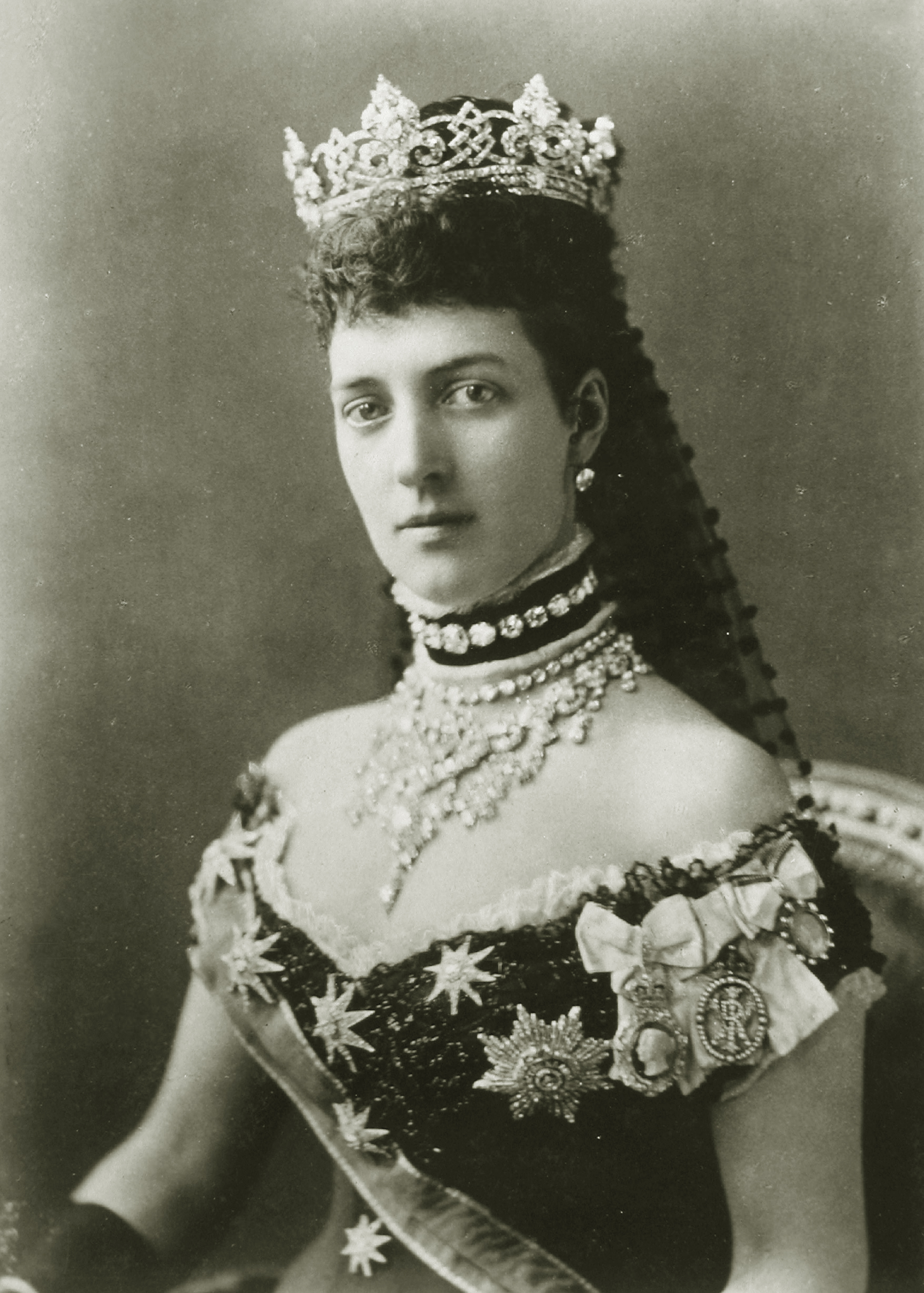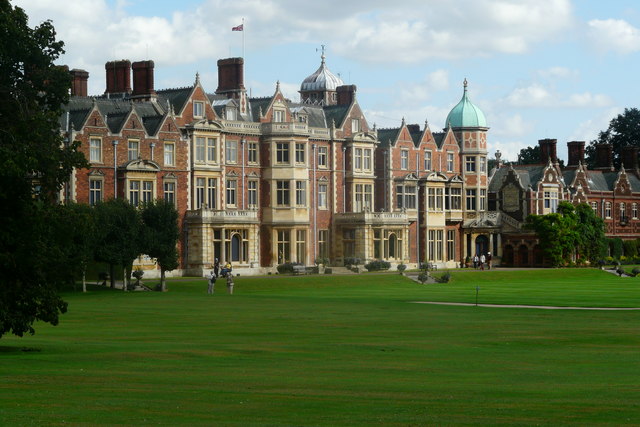by Scott Mehl © Unofficial Royalty 2014
Princess Irene of the Netherlands
Princess Irene of the Netherlands (Irene Emma Elisabeth) was born on August 5, 1939, at Soestdijk Palace, in Baarn, the Netherlands. She was the second of four daughters of the future Queen Juliana of the Netherlands and Prince Bernhard of Lippe-Biesterfeld. At the time of her birth, she was third in the line of succession for the Dutch throne.
Irene has an older sister and two younger sisters:
- Queen Beatrix of the Netherlands (born 1938), married Claus von Amsberg, had three sons
- Princess Margriet of the Netherlands (born1943), married Pieter van Vollenhoven, had four sons
- Princess Christina of the Netherlands (1947 – 2019) married and divorced Jorge Pérez y Guillermo, had two sons and one daughter
In May 1940, during the German invasion of the Netherlands, the family was evacuated to the United Kingdom, where Irene was christened in the chapel at Buckingham Palace. Queen Elizabeth (later The Queen Mother) served as one of her godparents. Just weeks later, the family sailed for Canada. They settled at Stornoway, a private residence in Rockcliffe Park, a suburb of Ottawa, where they would remain until the end of the war. Here, Princess Irene attended Rockcliffe Park Public School along with her older sister, Princess Beatrix. The Royal Dutch Brigade – a group of Dutch soldiers who formed to fight alongside the Allies was given the name ‘Regiment Princes Irene’ by her grandmother, Queen Wilhelmina. Eventually, that group became the Garderegiment Fuseliers Prinses Irene and Princess Irene continues to serve as Ceremonial Chief.
The family returned to the Netherlands in August 1945. Irene attended school at The Children’s Community Workshop (Werkplaats Kindergemeenschap) and the Baarnsch Lyceum, graduating in 1957. She then studied at the University of Lausanne, in Switzerland, and the University of Utrecht, in the Netherlands, studying literature and languages – particularly Spanish. She later qualified as a Spanish interpreter.
Following university, Irene moved to Madrid to further absorb the Spanish language and culture. It was here that she met her future husband, Carlos Hugo, Duke of Parma. Needless to say, the relationship was not without controversy. Irene secretly converted to Catholicism in 1963, which caused quite a stir in the Netherlands when it was made public. Then, the couple announced their engagement. Her mother Queen Juliana tried to have the engagement canceled, but the couple was determined to wed. Irene and Carlos returned to the Netherlands on February 9, 1964, and immediately began to meet with the Royal Family and the Dutch Government. It was finally announced that the wedding would take place and that Princess Irene would cease to be a member of the Dutch Royal House, and would relinquish all rights to the throne for herself and her descendants.
On April 29, 1964, Irene and Carlos married in the Borghese Chapel at the Basilica di Santa Maria Maggiore, in Rome, Italy. No members of the Dutch royal family attended. Following their honeymoon, they settled in Madrid, Spain. Before divorcing in 1981, the couple had four children, including twins Margarita and Jaime:
- Prince Carlos, Duke of Parma (born 1970), married Annemarie Gualthérie van Weezel, had two daughters and one son
- Princess Margarita, Countess of Colorno (born 1972), married (1) Edwin de Roy van Zuydewijn, no children, divorced (2) Tjalling ten Cate, had two daughters
- Prince Jaime, Count of Bardi (born 1972), married Viktória Cservenyák, had two daughters
- Princess Carolina, Marchioness of Sala (1974), married Albert Brenninkmeijer, had one son and one daughter
In 1980, Irene and her children returned to live in the Netherlands. Always interested in nature and its preservation, Irene published her first book, Dialogue With Nature, in 1995. A few years later, she established the Bergplaas Nature Reserve in Nieu-Bethesda, South Africa. She also established NatureWise, an organization that connects elementary students to nature, and founded the Lippe-Biesterfeld Nature College Foundation in 2001. Princess Irene prefers to be known simply as Irene van Lippe-Biesterfeld and rarely particiaptes in any official events in the Netherlands. However, she is almost always seen at family functions and maintains a very close relationship with her sisters and extended family.
This article is the intellectual property of Unofficial Royalty and is NOT TO BE COPIED, EDITED, OR POSTED IN ANY FORM ON ANOTHER WEBSITE under any circumstances. It is permissible to use a link that directs to Unofficial Royalty.














